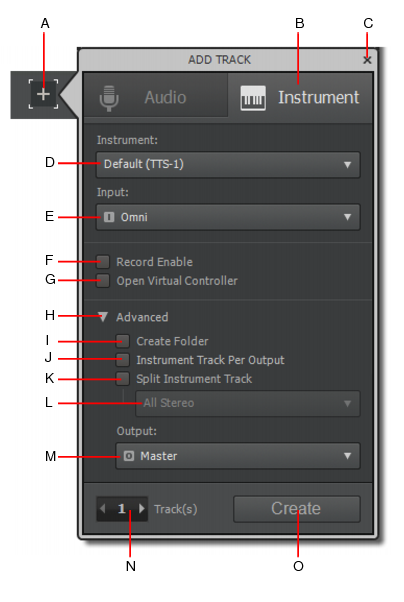Inserting tracksDo one of the following:










opens the Add Track menu, which consists of an Audio tab and an Instrument tab, each with relevant settings for creating audio or instrument tracks. You can specify the track type, number of tracks, and settings such as record enable, input monitoring, input and output.
Figure 180. Add Track button.


on each new track (requires an input to also be selected).

on each new track (requires an input to also be selected).










on each new track (requires an input to also be selected).






. A track is inserted without opening the Add Track menu.


Tip - Searching Documentation
Tip: To search for a specific topic, type your search query in the Search Cakewalk.com field at the top right of this page.
When the search results appear, click which product's documentation you would like to search to filter the search results further.
Note - Using Offline Help
Note: If you prefer to always use offline Help, go to Edit > Preferences > File > Advanced in your Cakewalk software and select Always Use Offline Help.
If you are not connected to the internet, your Cakewalk software will default to showing offline help until an internet connection becomes available.








